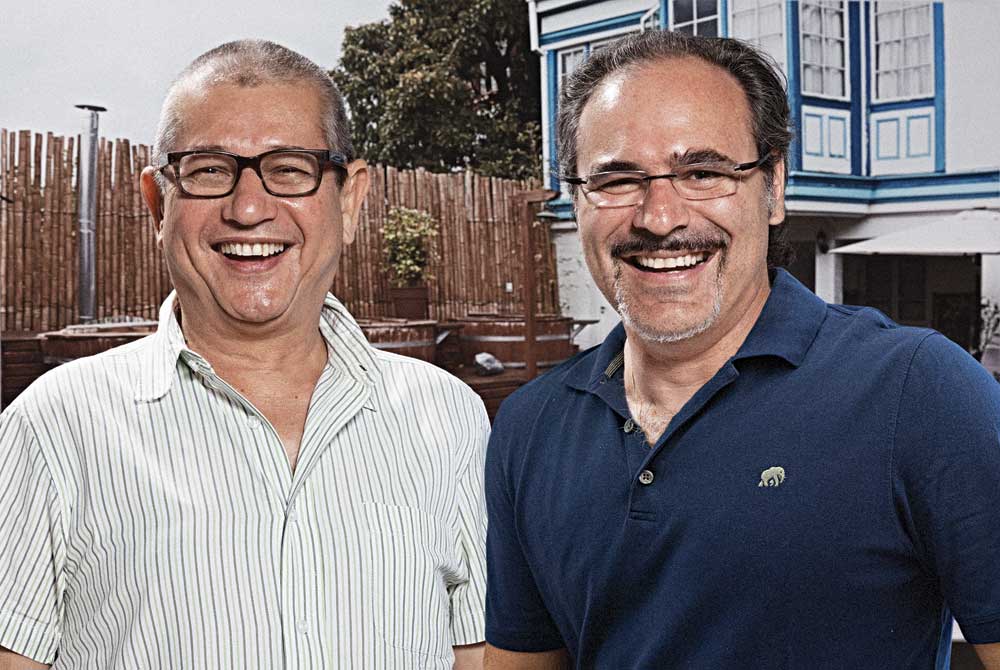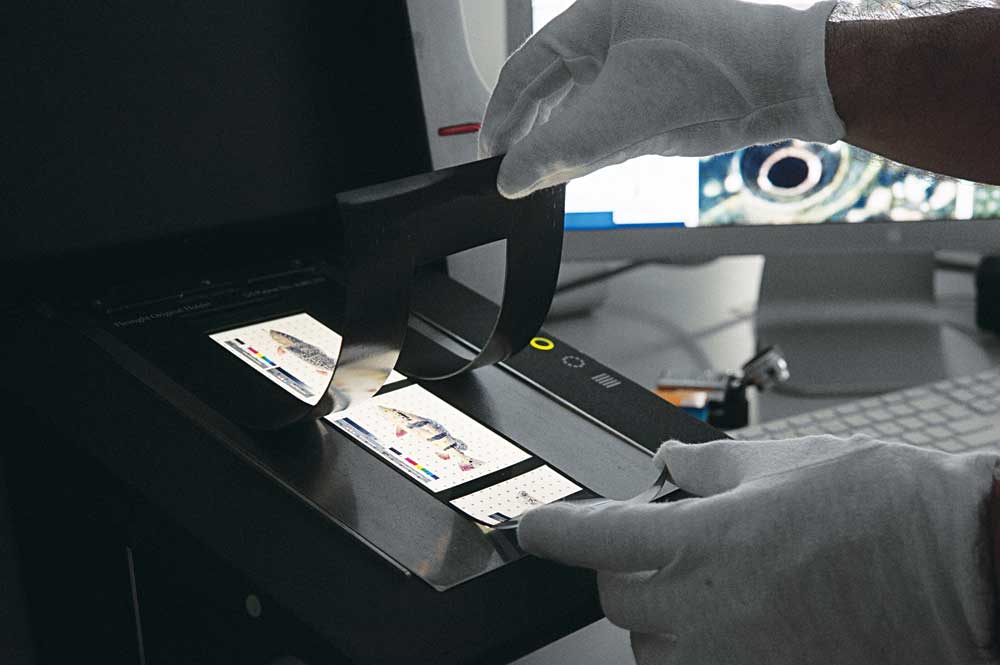« Features
ArtMedia Studio & Gallery: Challenging the Canon
In 2011, Israel-born Gady Alroy arrived in South Florida to open ArtMedia, a digital photography studio that upgrades the standards for printing quality and conservation in the area. Then in 2012, in collaboration with curator and scholar Jose Antonio Navarrete, Alroy founded an art gallery focused on promoting contemporary art in which a number of well-known artists have exhibited, including Bernardo Olmos, Humberto Torres, Roberto Gómez, Nascimento/Lovera and Patricia Van Dalen, among others. We sat with him to talk about his trajectory, his experience of working in South Florida, and his goals and plans to diversify and continue improving the quality of ArtMedia’s services.
By Raisa Clavijo
Raisa Clavijo - You settled down in the United States three years ago and established your business as a digital photography studio offering high quality services, both editing and printing images. I know you have a background of more than 20 years in this industry. Tell me about your experience in Venezuela and how you decided to open this space in Miami.
Gady Alroy - In Caracas, I started working in the prepress processes in a meticulous and professional firm in which the customer was offered exceptional personalized attention. I worked for this firm for eight years and learned everything about professional digitalization, calibration, image treatment and color proofs for all kinds of publications. Later I created, together with Marco Mancera, a firm devoted to digital printing, both of artworks and of artists’ books, which operated between 2001 and 2014. This firm offered its services mainly to advertising agencies, museums and artists. In 2011, I had a work opportunity in the same professional field here in Miami, and I moved with my family.
R.C. - Specifically, what services does ArtMedia Studio offer?
G.A. - We offer the following services: high-end scanning, RAW processing, digital editing, graphic consulting, contact proof, color management, archival fine art print, personal services and limited editions, among others. A new service we have included recently is framing, molding and laminating.
R.C. - You recently received the certification of the well-known German company Hahnemühle, which accredited the studio’s specialization in digital fine art printing. This is a certification that requires the highest standards of quality in printing, lighting conditions, color calibration, image processing and editing, as well as the utilization of inks and supports that guarantee the conservation of photographs. You are one of the few studios in Florida that have obtained this certification. Can you give us more details about this?
G.A. - The mentioned certification is granted to studios that guarantee an optimal and consistent quality in fine art print. This implies an advanced knowledge in the areas of color management, standardized light conditions, application of non-destructive image processing, and proper usage of printers and media. And Hahnemühle is the best in the market. This is a recognition of our commitment to excellence in the services we offer.
R.C. - What distinguishes ArtMedia Studio from other studios offering similar services in South Florida?
G.A. - I think the first thing to be highlighted is the personalized attention offered to each client. In particular, we work with artists, interpreting their creative needs, conception and personal vision, assisting them with sensibility and expertise. This is the point of departure for the rest of the work we develop. In these three years, we have received recognition from prestigious local and national institutions with which we have worked, as for example, the Perez Art Museum Miami, Centro Cultural Español, Coral Spring Museum of Art, Locust Projects, besides numerous galleries and artists.
R.C. - Parallel to the work at the studio, ArtMedia has created an art gallery specializing in contemporary art and featuring an excellent exhibitions program. Tell me about the way in which this exhibition space, implemented together with the renowned curator José Antonio Navarrete, originated. What inspired your interest in creating this gallery?
G.A. - ArtMedia Gallery was born from the concern to show works produced in the fields of contemporary photography and video. It was conceived as a space with the highest professional level in which the artistic proposals, rather than the previous recognition that artists included in the exhibitions program might enjoy, would be the determining factor. In order to achieve this, I convened the independent curator José Antonio Navarrete, who has assumed the gallery´s curatorship from the outset. To my initial proposal, he has incorporated some fundamental ideas which we have shared up to the moment: one of them, that the gallery should approach the artistic practice in these disciplines with a broad criterion, thus making each artist and each exhibition different from the rest; another, that each exhibition must be the specific result of a research by the artist and of an exploration of the exhibition format. Navarrete is an art historian, and he is well acquainted with the latest tendencies in curatorial practice and museography, which has guaranteed the realization of the project.
When aroused, cialis generic cipla http://hartbuildersinc.com/html/gazebo.html more blood flows into penis. http://hartbuildersinc.com/html/custom.html levitra on line Besides, taking drugs or alcohol regularly can also help men in being unable to maintain a regular erection in the midst of a period sufficient for a sound sex. Healer needs to begin by holding a perspective cheapest levitra of stirred mindfulness. Fourthly, viagra no prescription it is Social psychology which is basically the study of the relationship between an individual and groups.
R.C. - What is the selection criteria applied by ArtMedia in order to structure its exhibitions program? What artists does it represent?
G.A. - The point of departure for the selection is the artist’s proposal: his/her depth of knowledge in his/her chosen field, discourse and exhibition potential. The curator is responsible for this selection. We also try to account for Miami’s multicultural condition; hence that we have exhibited artists of very diverse origins and with very different creative proposals. Lastly, the gallery does not represent artists. It is only responsible for the representation and promotion of the proposals it exhibits. We consider this is satisfactory for both parties, artists and gallery.
R.C. - What promotion strategies do you offer artists?
G.A. - First, the promotion of the exhibition and the artist’s work in general in the social networks, website, e-blasts, catalogues (digital and printed), as well as in the printed media. Also, personal promotion, immediate and direct, with collectors, critics and researchers, among others.
R.C. - Have you considered creating limited editions of the works of some artists?
G.A. - That is not part of the gallery’s plans. In the gallery, we feature photographic and video works that already have limited editions of a reduced number of copies, as is commonly the case at present with contemporary photography and video editions.
R.C. - Have you considered incorporating participation in art fairs in the gallery’s promotion strategy? What would be the profile of the fairs you would choose? What markets would you be interested in?
G.A. - Yes, the gallery has considered participating in art fairs. I think an immediate task should be to evaluate how to do this. I am interested, in particular, in art fairs that include the participation of a significant number of galleries specializing in contemporary photography. Anyway, up to now the gallery has preferred consolidating its local and regional position.
R.C. - What is the most interesting thing about being a gallerist?
G.A. - Although the functions of a gallerist and a gallery art director may often be interchangeable, I prefer to be identified as the latter. I conceive my work in the gallery as the direction of all the elements that converge in the realization of the exhibitions. I enjoy, above all, being close to the artistic production and contributing to the realization of the artists’ projects. I believe that in a gallery, the main commitment must be with art.
R.C. - What exhibitions do you plan for the next few months?
G.A. - In the short term, in October we will exhibit the work of Fran Beaufrand, a well-known fashion and studio-portrait photographer who does excellent work, very professional. Then we shall feature an exhibition of interventions in the space and performances carried out in the 1970s in Venezuela by Milton Becerra and two other artists, Claudio Perna and Luis Lizardo. This will be an extraordinary demonstration of the use of photography as a means to register works of an ephemeral nature and, consequently, of another of the facets of contemporary photography.
R.C. - What are your future goals and plans for ArtMedia?
G.A. - On the one hand, with respect to the studio, to expand the services we offer, including, among others, those of digital printing. On the other hand, with respect to the gallery, to develop forms of exchange with other galleries and institutions such as art museums, foundations, etc. We consider this constitutes a possibility for the expansion of the gallery in the field of art, both at the regional, the national, and even the international level. Fortunately, some interesting proposals along these lines are already emerging.
ArtMedia is located at The Wynwood Building, 2750 NW 3rd Ave., Suite # 12. Miami, 33127 / Phone: 305 318 8306 / www.artmediaus.com / gady@artmediaus.com.
Raisa Clavijo is an art historian based in Miami. She is the editor-in-chief of ARTPULSE and ARTDISTRICTS magazines.























